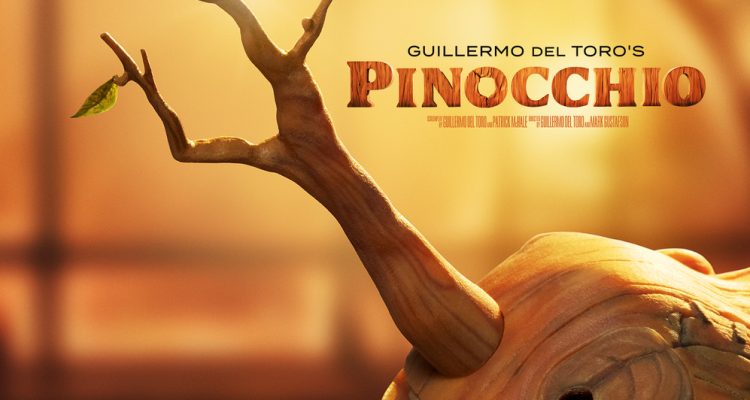Carlo Collodui’s 1883 fantasy novel “Pinocchio” has famously been adapted multiple times, most famously in Disney 1940 animated film of the same name. All that will soon change thanks to Guillermo del Toro’s visionary adaptation through stop-motion.
After struggling to watch Disney’s CGI-meets-live-action “Pinocchio” adaptation with Tom Hanks, “Guillermo del Toro’s Pinocchio” is a palate cleanser that’s incredibly thought provoking and emotionally moving.
Without question, del Toro’s film is one of the greatest collaboration of artists working in the history of cinema. There is something special about stop-motion animation, having the knowledge that everything I’m watching is painstakingly crafted by artisans. The level of detail on display here is astounding, whether it’s dirt under Geppetto’s fingernails, tears rolling down the cheeks, the textures of the fabrics, or the nuanced facial expressions… the artists are equally responsible for crafting these powerful performances in hand with the actors.
There’s an indelible humanity through the craft of stop motion that no computer could ever hope to replicate. Del Toro is keen on highlighting the meta conversation about puppets telling a story about a puppet who was given life. As del Toro puts it, because all the characters are wooden in the film it allows the Pinocchio character to not seem as jarring to the audience.
Del Toro co-directed the film with Mark Gustafson over a period of several years, and he’s brought back many fequent collaborators like his Oscar winning composer Alexandre Desplat.
Several actors in del Toro’s brilliant ensemble are frequent collaborators, including Ron Perlman and David Bradley. Bradley’s take on Geppetto is incredibly earnest and human, and when paired with Gregory Mann’s Pinocchio, you’ve found the heart and soul of this meticulously crafted film.
Ewan McGregor, in a surprise turn, gives one of his best performances as the Sebastian J. Cricket. The famous cricket is the film’s narrator, occasional comic relief, and surprise hero in the end. Del Toro and Patrick McHale have delivered a near perfect script for the actors and artists to interpret.
It’s a fascinating process when you realize that certain artists were hired to oversee the arcs of certain characters in the film, the ones who understood the characters as well — if not better — than the actors voicing them. The final performances is a beautiful merger of the actor’s voice performance and the artists who painstakingly captured the stop motion animation.
The film has more than a few points to make… one of those is certainly love, specifically the love a father for a child. Having lost his son in what can only be described as a pointless byproduct of war, Geppetto weeps at the child’s grave and begs the anyone with the power to help him.
During a particularly drunken night, Geppetto carves a replacement child that happens to come to life thanks to the spirits who took pity on him. This boy, Pinocchio, is very different from his last and the magical wooden boy and his human father have a significant learning curve for effective cohabitation.
Pinocchio’s exuberance and curiosity contrast with Geppetto, and the wooden boy doesn’t seem to understand the political dangers of the time he’s living in…
Del Toro purposefully sets the film in Mussolini’s fascist Italy, where every citizen is a puppet to the government’s ideology, except for the actual puppet. Pinocchio goes against the grain and ultimately makes a mockery of Mussolini to his face.
Pinocchio befriends the circus monkey who would have previously been considered and enemy and they’re reunited with Geppetto in the bellow of a fascinating stop motion whale. From there, the story follows a familiar path but not without a few wonderful and heartfelt surprises.
The way Pinocchio is reincarnated with his spirit in his body is fascinating and a genius touch within the film. The architecture of the supernatural and its rules make it easy to follow and a well-reasoned climax occurs as a result.
This is an incredibly layers story that aims to educate while entertaining and moving the audience to tears numerous times. The original songs in the film are high quality, giving the original Disney animated film a run for its money.
This is a film that should earn a traditional Best Picture nomination, in addition to sweeping up the trophy for Best Animated Film. Netflix has its first cinematic masterpiece, and hopefully del Toro will play in the stop motion sandbox again very soon.
Letter Grade: A+


